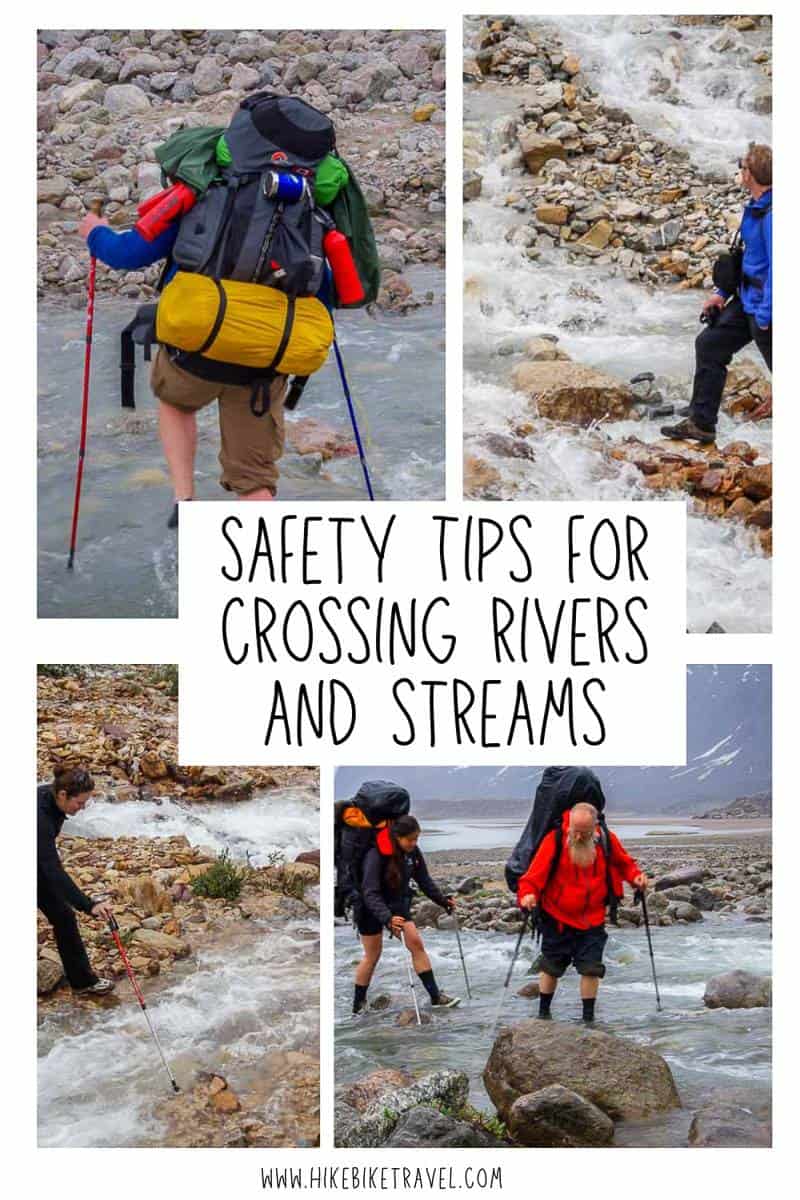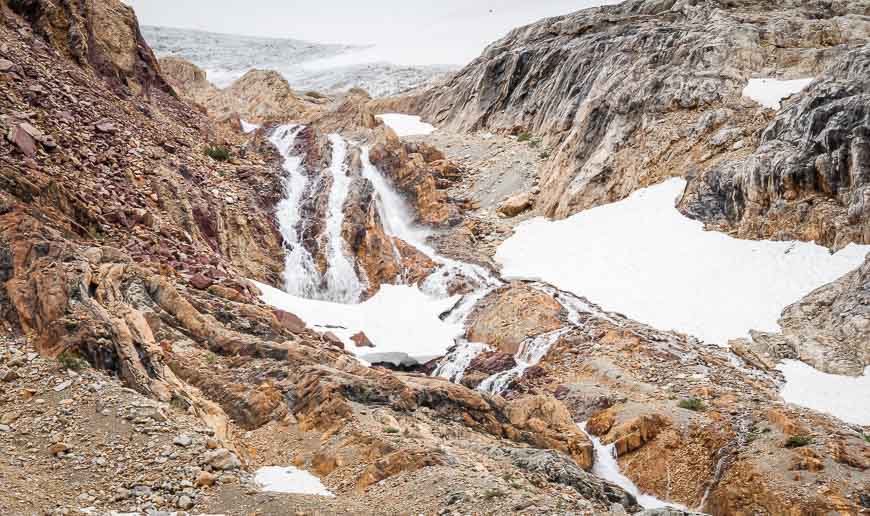On a spring hike in Kananaskis Country I couldn’t help but notice that the Elbow River was flowing hard already. In fact kayakers could be seen playing in the rapids. The scene brought to mind river safety – in particular safely tips for crossing rivers or stream on foot.
When I was in Auyuittuq National Park in Nunavut, we were given stern warnings and a lot of useful tips on how to get across a river alive. The reason – drownings are the biggest cause of death in Auyuittuq National Park – and not falls off mountain peaks.
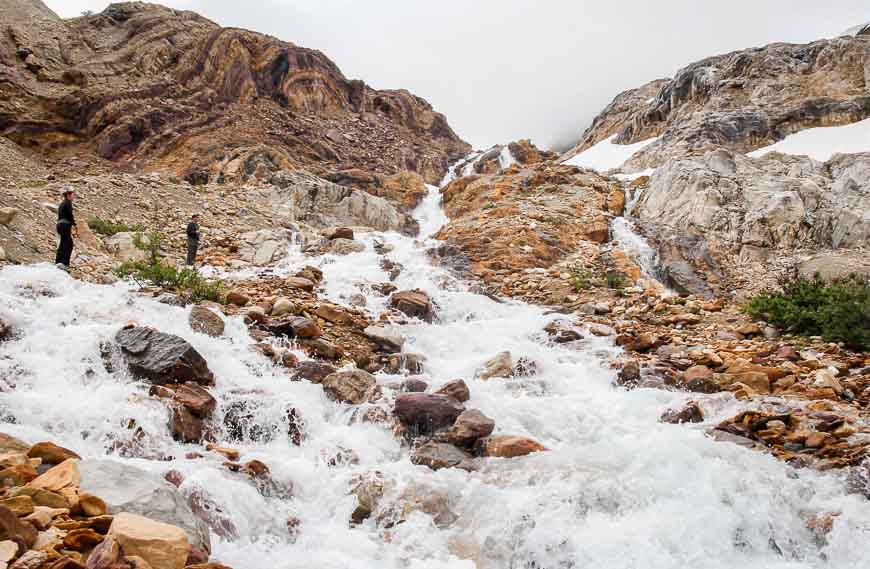
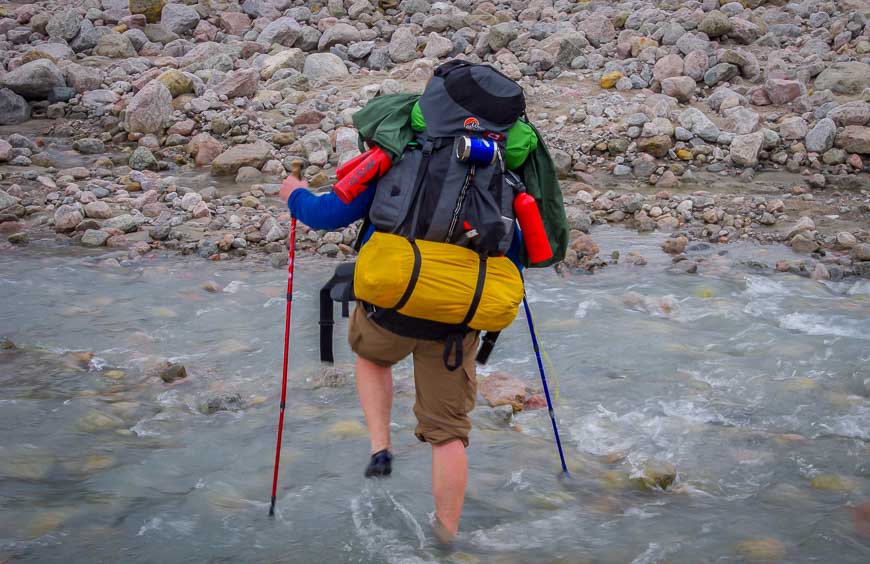
This post includes some affiliate links. If you make a qualifying purchase through one of these links, I will receive a small percentage of the sale at no extra cost to you. Thank you for your support.
A case in point is the story of a woman who managed to climb Mt. Thor (see photo below) – which boasts the world’s tallest vertical face. But on the return to the trailhead she slipped in the river with her backpack on and drowned.

Here are 12 safety tips for crossing rivers and streams
1. Carry neoprene booties
If it’s a cold river or stream you’ll be crossing, ensure you carry a pair of neoprene booties in your knapsack – and put them on. This way your socks and boots will stay dry as well.
2. Pull out the hiking poles
Carry a pair of hiking poles. They are invaluable for balance and for testing the depth of water.

3. Loosen all straps
If you’re crossing with a backpack loosen the straps and unfasten the waist and chest straps. If you fall in the water, you don’t want the weight of your pack to prevent you from getting up.
4. Face upstream – another one of the important safety tips for crossing rivers
Face upstream and as you head across and move with the current instead of fighting it.
Two of the biggest safety tips for crossing rivers
5. Don’t wrap anything around your neck
Never wrap your boots around your neck. People have drowned when the laces get wrapped around their necks.
6. Don’t stare into the water
Don’t stare into the water. It’s easy to get dizzy and lose your balance. Instead, look across the river or stream to help maintain your balance.
7. Safety tips for where to cross a stream
Choose an area where the water is slower moving. Pick a flat area over a steep area and a braided area over a single channel. And cross below the biggest rapids.
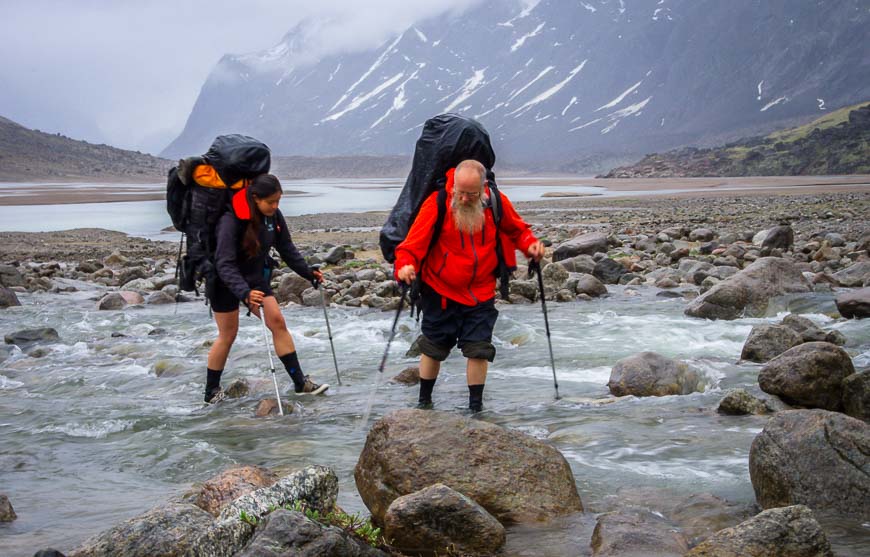
8. Time your river crossing – one of the very important safety tips for crossing rivers
The timing of your river crossing is critical in some parts of the world. In the Arctic the lowest flow is typically between 2 AM and 7 AM.
Be prepared to wait hours or even days if necessary before crossing. And be prepared to cross in the middle of the night. Also be willing to abort the trip or the route if the water levels don’t drop.
9. Consider the abilities of the weakest group member
Consider the abilities of the weakest group member. Perhaps a strong member of the group will need to ferry a backpack across the river for the weakest member. There should be no shame in this! Crossing as a group may have some merit.
A strong member can stand upstream and other members can continue single file behind. The downstream eddy makes the going easier.
10. Never rush a river crossing
Don’t rush the river crossing. Get your balance before moving forward.
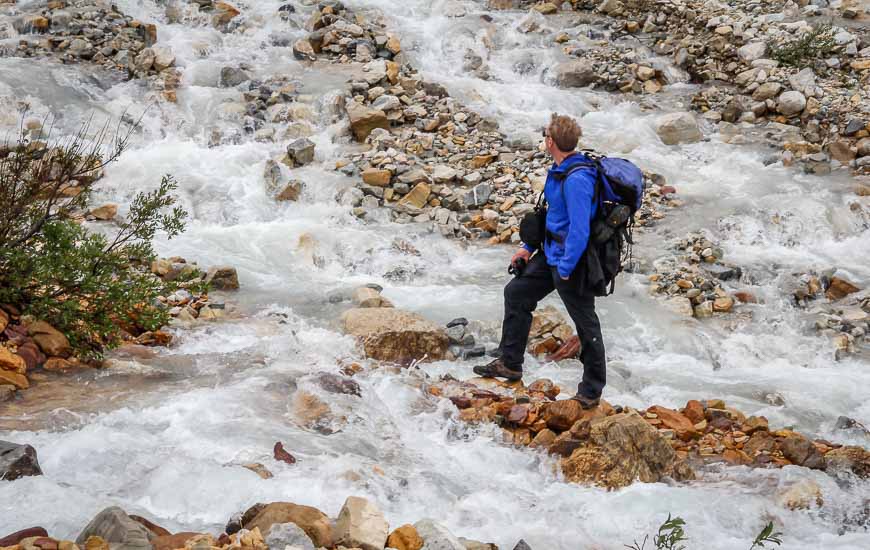
11. Beware of cloudy water
Also be aware of cloudy water which masks obstacles like large rocks or holes.
12. Check out the topography along the river
Note the location of drop-offs, waterfalls, pools and unstable riverbanks. I know I have scoured the banks of a river looking for a safe crossing while while hiking the President Range trails in Yoho National Park. On that occasion we never did find a safe crossing.
On a hike to the Bow Hut one year in Banff National Park, it took my friend and I an incredibly long time to cross a river – because we didn’t have neoprene booties or poles. Lesson learned.
Have you turned back because of a dangerous river crossing? Have you ever had a close call?
Further reading on safety tips
- 10 Fat Tire Bike Tips for Beginner Riders
- 20 Road Cycling Safety Tips That Will Keep You Alive
- Tips for Staying Safe in Bear Country
- The 10 Hiking Essentials Everyone Should Carry
- The Best Way to Pack Your Backpack
Click on the photo to bookmark to your Pinterest boards.
